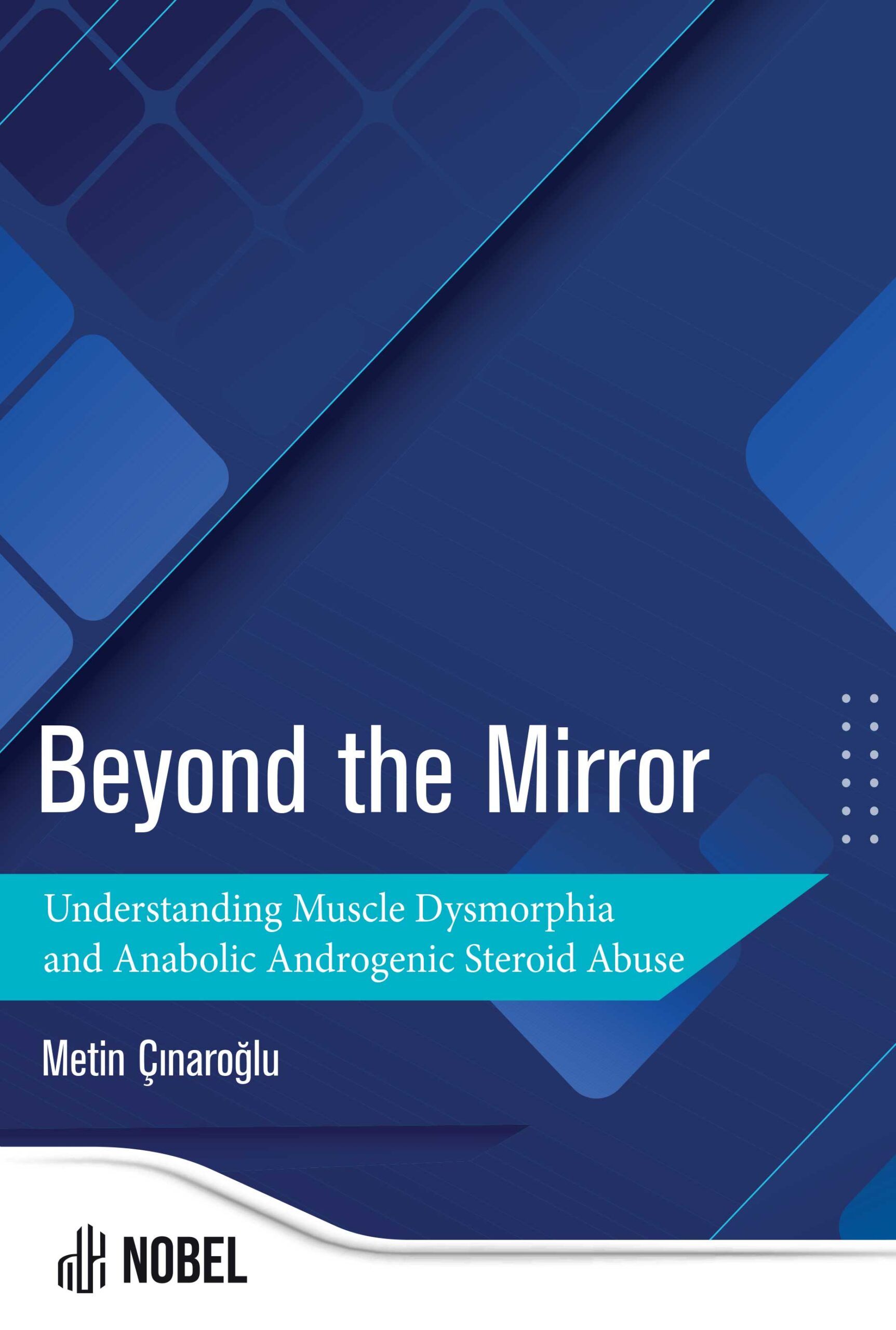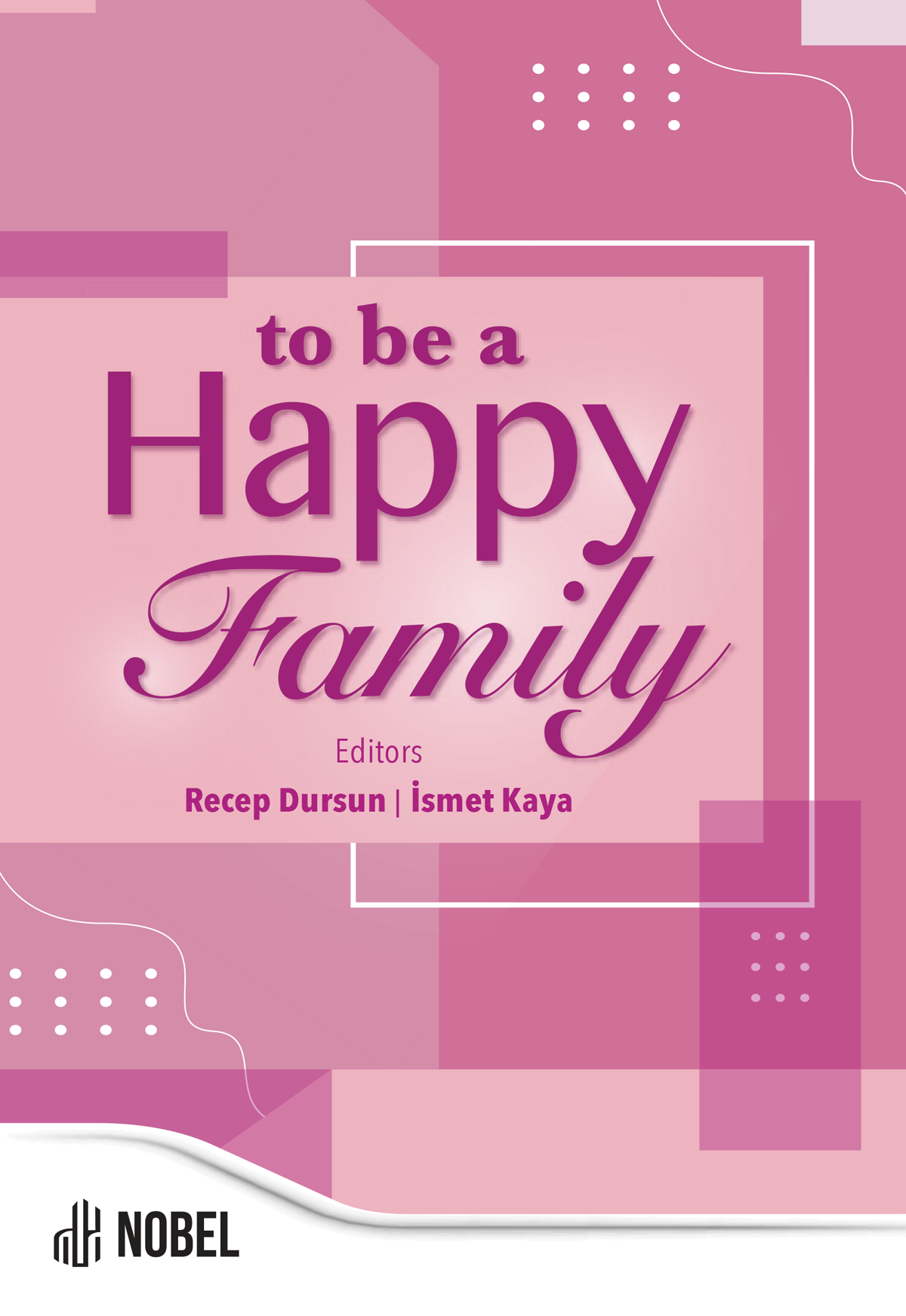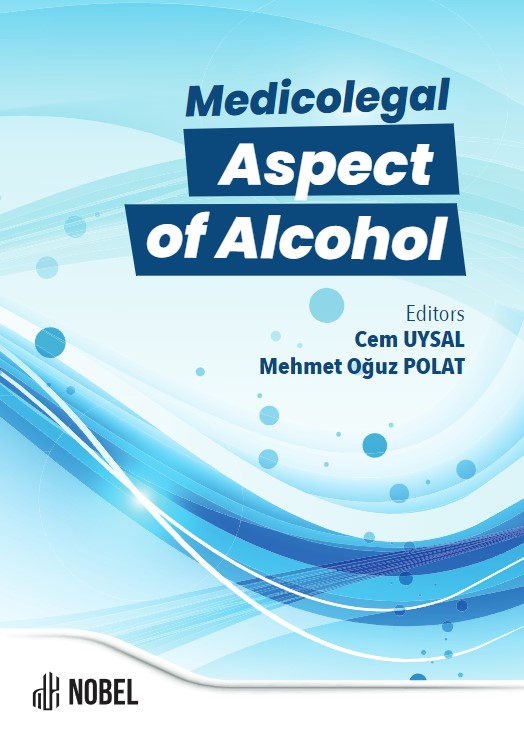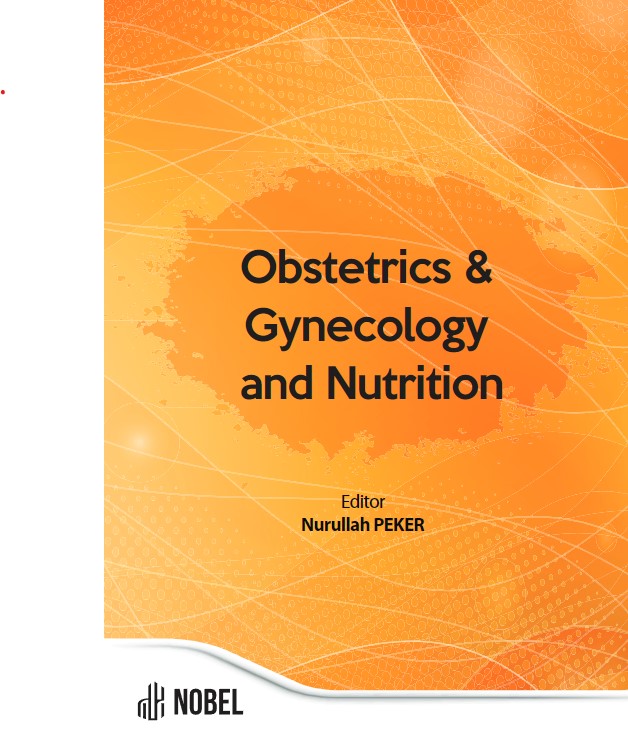Beyond the Mirror: Understanding Muscle Dysmorphia and Anabolic Androgenic Steroid Abuse
Metin Çınaroğlu (Author)
Release Date: 2024-02-19
Beyond the Mirror: Understanding Muscle Dysmorphia and Anabolic Androgenic Steroid Abuse unveils the intricate world of muscle dysmorphia and the perilous journey through steroid abuse. Authored by Dr. Metin Çınaroglu, this groundbreaking book delves deep into the psychological, physical, and societal dimensions shaping our perceptions of physical perfection. It sheds light on the origins, manifestations, [...]
| Work Type | Monograph |
|---|---|
| Internal Reference | NBL11 |
| Edition | 1 |
| DOI | https://doi.org/10.69860/nobel.9786053358848 |
| ISBN | 978-605-335-884-8 (PDF) |
| Language | ENG |
| Page Count | 178 |
| Print Lenght | xii+166 |
| Place | Istanbul |
| Copyright Holder | Nobel Tıp Kitabevleri |
| License | https://nobelpub.com/publish-with-us/copyright-and-licensing |
| BIC | JM |
|---|---|
| BISAC | MED084000 |
| THEMA | JM |
2. The Intersection of Muscle Dysmorphia and AAS Abuse
3. Consequences and Complications
4. Assessment and Diagnosis
5. Treatment and Recovery
6. Prevention and Education
7. Personal Stories and Case Studies
8. Future Directions and Research
Metin Cinaroglu (Author)
PhD, Assistant Professor, Nisantasi University
https://orcid.org/0000-0001-6342-3949
3Dr. Metin Çınaroğlu is an esteemed Assistant Professor in the Psychology Department at Istanbul Nişantaşı University. With over two decades of experience, Dr. Çınaroğlu has dedicated his career to understanding the complexities of body dysmorphic disorder, muscle dysmorphia, and the psychological effects of media on body image. His extensive research encompasses various aspects of addiction, including the psychological impact of steroid use and eating disorders. Dr. Çınaroğlu is renowned for his compassionate approach and his ability to translate complex psychological concepts into accessible language. He has published numerous articles and book chapters, contributing significantly to the academic community’s understanding of body image disorders. His latest work, "Beyond the Mirror: Navigating Fitspiration, Thinspiration, and Body Dysmorphic Disorder," is a culmination of his research and clinical expertise, offering readers valuable insights and practical strategies for fostering mental health and body positivity. In addition to his academic and research pursuits, Dr. Çınaroğlu is a dedicated clinician, committed to advocating for those affected by body image disorders. His work in Turkey and beyond has been instrumental in shaping public discourse on mental health, societal pressures, and the need for more inclusive beauty standards. Dr. Çınaroğlu continues to be a pivotal figure in the field of psychology, dedicated to enhancing the dialogue around health, beauty, and societal norms.
Allen, A., Hadley, S. J., Kaplan, A., Simeon, D., Friedberg, J., Priday, L., Baker, B. R., Greenberg, J. L., & Hollander, E. (2008). An open-label trial of venlafaxine in body dysmorphic disorder. CNS Spectrums, 13(2), 138–144.
American Psychiatric Association. (2015). Structured clinical interview for DSM-5 (SCID-5). Washington, DC: American Psychiatric Association.
Badenes-Ribera, L., Rubio-Aparicio, M., Sanchez-Meca, J., Fabris, M. A., & Longobardi, C. (2019). The association between muscle dysmorphia and eating disorder symptomatology: A systematic review and meta-analysis. Journal of Behavioral Addictions, 8(3), 351–371.
Bahrke, M. S., Yesalis, C. E., Kopstein, A. N., & Stephens, J. A. (2000). Risk factors associated with anabolic- androgenic steroid use among adolescents. Sports Medicine, 29, 397–405.
Baird, A. L., & Grieve, F. G. (2006). Exposure to Male Models in Advertisements Leads to a Decrease in Men’s Body Satisfaction. North American Journal of Psychology, 8(1).
Beilharz, F., Castle, D. J., Grace, S., & Rossell, S. L. (2017). A systematic review of visual processing and associated treatments in body dysmorphic disorder. Acta Psychiatrica Scandinavica, 136(1), 16–36.
Bischoff, K., Mukai, M., & Ramaiah, S. K. (2018). Liver toxicity. In Veterinary toxicology (pp. 239–257). Elsevier.
Bjørnebekk, A., Westlye, L. T., Walhovd, K. B., Jørstad, M. L., Sundseth, Ø. Ø., & Fjell, A. M. (2019). Cognitive performance and structural brain correlates in long-term anabolic-androgenic steroid exposed and nonexposed weightlifters. Neuropsychology, 33(4), 547.
Bond, A. J., Choi, P. Y. L., & Pope Jr, H. G. (1995). Assessment of attentional bias and mood in users and non-users of anabolic-androgenic steroids. Drug and Alcohol Dependence, 37(3), 241–245.
Brohede, S., Wingren, G., Wijma, B., & Wijma, K. (2013). Validation of the Body Dysmorphic Disorder Questionnaire in a community sample of Swedish women. Psychiatry research, 210(2), 647-652.
Brower, K. J. (2009). Anabolic steroid abuse and dependence in clinical practice. The Physician and Sportsmedicin.37(4), 131–140.
Cafri, G., Thompson, J. K., Ricciardelli, L., McCabe, M., Smolak, L., & Yesalis, C. (2005). Pursuit of the muscular ideal: Physical and psychological consequences and putative risk factors. Clinical Psychology Review, 25(2), 215–239.
Carlsson, A. (1978). Antipsychotic drugs, neurotransmitters, and schizophrenia. American Journal of Psychiatry,135(2), 164–173.
Castro-Lopez, R., Molero, D., Cachon-Zagalaz, J., & al., et. (2014). Personality factors and bodybuilding: indicators associated to reverse anorexia. Rev de Psicol Deporte, 23(2), 295–300.
Chung, B. (2001). Muscle dysmorphia: a critical review of the proposed criteria. Perspectives in Biology and Medicine, 44(4), 565–574.
Clark, A. S., & Henderson, L. P. (2003). Behavioral and physiological responses to anabolic-androgenic steroids. Neuroscience & Biobehavioral Reviews, 27(5), 413–436.
Cooper, M., Eddy, K. T., Thomas, J. J., Franko, D. L., Carron‐Arthur, B., Keshishian, A. C., & Griffiths, K. M. (2020). Muscle dysmorphia: A systematic and meta‐analytic review of the literature to assess diagnostic validity. International Journal of Eating Disorders, 53(10), 1583–1604.
Cunningham, M. L., Griffiths, S., Mitchison, D., Mond, J. M., Castle, D., & Murray, S. B. (2017). Muscle Dysmorphia: An Overview of Clinical Features and Treatment Options. Journal of Cognitive Psychotherapy, 31(4), 255–271.
Dysmorphia: An Overview of Clinical Features and Treatment Options. Journal of Cognitive Psychotherapy, 31(4), 255–271.
Elliot, D. L., Goldberg, L., Moe, E. L., DeFrancesco, C. A., Durham, M. B., & Hix-Small, H. (2004). Preventing substance use and disordered eating: initial outcomes of the ATHENA (athletes targeting healthy exercise and nutrition alternatives) program. Archives of Pediatrics & Adolescent Medicine, 158(11), 1043–1049.
Fairburn, C. G., Cooper, Z., & Shafran, R. (2003). Cognitive behaviour therapy for eating disorders: A “transdiagnostic” theory and treatment. Behaviour Research and Therapy, 41, 509–528.
Goldberg, L., Elliot, D., Clarke, G. N., MacKinnon, D. P., Moe, E., Zoref, L., Green, C., Wolf, S. L., Greffrath, E., & Miller, D. J. (1996). Effects of a multidimensional anabolic steroid prevention intervention: The Adolescents Training and Learning to Avoid Steroids (ATLAS) program. Jama, 276(19), 1555–1562.
Gonzalez-Marti, I., Bustos, J. G. F., Hernandez-Marti, A., & al, et. (2014). Physical perceptions and self-concept in athletes with muscle dysmorphia symptoms. Span J Psychol, 17, 1–7.
Gorayski, P., Thompson, C. H., Subhash, H. S., & Thomas, A. C. (2008). Hepatocellular carcinoma associated with recreational anabolic steroid use. Br J Sports Med, 42(1), 74–75.
Gordon, C. S., Jarman, H. K., Rodgers, R. F., McLean, S. A., Slater, A., Fuller-Tyszkiewicz, M., & Paxton, S. J. (2021). Outcomes of a cluster randomized controlled trial of the SoMe social media literacy program for improving body image-related outcomes in adolescent boys and girls. Nutrients, 13(11), 3825.
Gruber, A. J., & Pope Jr, H. G. (2000). Psychiatric and medical effects of anabolic-androgenic steroid use in women. Psychotherapy and Psychosomatics, 69(1), 19–26.
Hall, R. C. W., Hall, R. C. W., & Chapman, M. J. (2005). Psychiatric complications of anabolic steroid abuse. Psychosomatics, 46(4), 285–290.
Hanes, K. R. (1998). Neuropsychological performance in body dysmorphic disorder. Journal of the International Neuropsychological Society, 4(2), 167–171.
Harvey, O., Keen, S., Parrish, M., & van Teijlingen, E. (2019). Support for people who use Anabolic Androgenic Steroids: A Systematic Scoping Review into what they want and what they access. BMC Public Health, 19(1), 1–13.
Haupt, H. A., & Rovere, G. D. (1984). Anabolic steroids: a review of the literature. Am J Sports Med, 12, 469–484.
44 Hiemke, C., & Härtter, S. (2000). Pharmacokinetics of selective serotonin reuptake inhibitors. Pharmacology & Therapeutics, 85(1), 11–28. https://doi.org/https://doi.org/10.1016/S0163-7258(99)00048-0
Hilkens, L., Cruyff, M., Woertman, L., Benjamins, J., & Evers, C. (2021). Social media, body image and resistance training: creating the perfect ‘me’with dietary supplements, anabolic steroids and SARM’s. Sports Medicine-Open, 7(1), 1–13.
Himanshu A., K., Kaur, A., & Singla, G. (2020). Rising dysmorphia among adolescents : A cause for concern. Journal of Family Medicine and Primary Care, 9(2), 567–570.
Hoffman, J. R., & Ratamess, N. A. (2006). Medical issues associated with anabolic steroid use: are they exaggerated? Journal of Sports Science & Medicine, 5(2), 182.
Hong, K., Nezgovorova, V., Uzunova, G., Schlussel, D., & Hollander, E. (2019). Pharmacological treatment of body dysmorphic disorder. Current Neuropharmacology, 17(8), 697–702.
yttel, J. (1994). Pharmacological characterization of selective serotonin reuptake inhibitors (SSRIs). International Clinical Psychopharmacology, 9, 19–26.
Imperatori, C., Panno, A., Carbone, G. A., Corazza, O., Taddei, I., Bernabei, L., Massullo, C., Prevete, E., Tarsitani, L., & Pasquini, M. (2022). The association between social media addiction and eating disturbances is mediated by muscle dysmorphia-related symptoms: a cross-sectional study in a sample of young adults. Eating and Weight Disorders-Studies on Anorexia, Bulimia and Obesity, 27(3), 1131–1140.
Jalilian, F., Allahverdipour, H., Moeini, B., & Moghimbeigi, A. (2011). Effectiveness of anabolic steroid preventative intervention among gym users: Applying theory of planned behavior. Health Promotion Perspectives, 1(1), 32.
Kanayama, G., Hudson, J. I., & Pope Jr, H. G. (2008). Long-term psychiatric and medical consequences ofanabolic–androgenic steroid abuse: A looming public health concern? Drug and Alcohol Dependence,98(1–2), 1–12.164 Chapte r 8 Future Directions and Research Kanayama, G., Hudson, J. I., DeLuca, J., Isaacs, S., Baggish, A., Weiner, R., Bhasin, S., & Pope Jr, H. G.(2015). Prolonged hypogonadism in males following withdrawal from anabolic–androgenic steroids:an under‐recognized problem. Addiction, 110(5), 823–831.
Kaur, A., Kaur, A., & Singla, G. (2020). Rising dysmorphia among adolescents: A cause for concern. Journal of Family Medicine and Primary Care, 9(2), 567.
Kuhn, C. M. (2002). Anabolic steroids. Recent Prog Horm Res, 57, 411–434.
Lally, J., & MacCabe, J. H. (2015). Antipsychotic medication in schizophrenia: a review. British Medical Bulletin, 114(1), 169–179.
Leone, J. E., Sedory, E. J., & Gray, K. A. (2005). Recognition and treatment of muscle dysmorphia and related body image disorders. Journal of Athletic Training, 40(4), 352–359.
Marks, R. J., De Foe, A., & Collett, J. (2020). The pursuit of wellness: Social media, body image and eating disorders. Children and Youth Services Review, 119, 105659.
McCullagh, E. P., & Jones, R. (1941). A note on the effect of certain androgens upon red blood cell count and upon glucose tolerance. Cleve Clin Q., 8, 79–84.
McGINNIS, M. Y. (2004). Anabolic androgenic steroids and aggression: studies using animal models. Annals of the New York Academy of Sciences, 1036(1), 399–415.
Melchert, R. B., & Welder, A. A. (1995). Cardiovascular effects of androgenic–anabolic steroids. Med. Sci.Sports Exerc, 27, 1252–1262.
Melnik, B., Jansen, T., & Grabbe, S. (2007). Abuse of anabolic‐androgenic steroids and bodybuilding acne:an underestimated health problem. JDDG: Journal Der Deutschen Dermatologischen Gesellschaft, 5(2),110–117.
Mitchell, L., Murray, S. B., Cobley, S., Hackett, D., Gifford, J., Capling, L., & O’Connor, H. (2017). Muscle dysmorphia symptomatology and associated psychological features in bodybuilders and non-bodybuilder resistance trainers: A systematic review and meta-analysis. Sports Medicine, 47, 233–259.
Morgan, J. F. (2008). The invisible man: A self-help guide for men with eating disorders, compulsive exercise and bigorexia. Routledge.
O’Connor, D. B., Archer, J., & Wu, F. C. W. (2004). Effects of testosterone on mood, aggression, and sexualbehavior in young men: a double-blind, placebo-controlled, cross-over study. The Journal of Clinical Endocrinology & Metabolism, 89(6), 2837–2845.
Parkinson, A. B., & Evans, N. A. (2006). Anabolic androgenic steroids: a survey of 500 users. Med Sci SportsExerc, 38, 644–651.C h a p t e r 8 Future Directions and Research 165
Piacentino, D., D Kotzalidis, G., Del Casale, A., Rosaria Aromatario, M., Pomara, C., Girardi, P., & Sani, G. (2015). Anabolic-androgenic steroid use and psychopathology in athletes. A systematic review. Current Neuropharmacology, 13(1), 101–121.
Piatkowski, T., Gibbs, N., & Dunn, M. (2023). Beyond the law: Exploring the impact of criminalising anabolic–androgenic steroid use on help-seeking and health outcomes in Australia. Journal of Criminology,26338076231209044–26338076231209044.
Pope, H. G., & Katz, D. L. (1994). Psychiatric and medical effects of anabolic-androgenic steroid use: a controlled study of 160 athletes. Archives of General Psychiatry, 51(5), 375–382.
Pope, J. H. G., Wood, R. I., Rogol, A., Nyberg, F., Bowers, L., & Bhasin, S. (2014). Adverse health consequences of performance-enhancing drugs: an Endocrine Society scientific statement. Endocr Rev, 35, 341–375.
Prnjak, K., Jukic, I., Mitchison, D., Griffiths, S., & Hay, P. (2022). Body image as a multidimensional concept: A systematic review of body image facets in eating disorders and muscle dysmorphia. Body Image,42, 347–360.
Rasmussen, J. J., Selmer, C., Østergren, P. B., Pedersen, K. B., Schou, M., Gustafsson, F., Faber, J., Juul, A., & Kistorp, C. (2016). Former abusers of anabolic androgenic steroids exhibit decreased testosteronelevels and hypogonadal symptoms years after cessation: a case-control study. PloS One, 11(8),e0161208–e0161208.
Rhea, D. J., Lantz, C. D., & Cornelius, A. E. (2004). Development of the muscle dysmorphia inventory (MDI). Journal of Sports Medicine and Physical Fitness, 44(4), 428–435.
Rohman, L. (2009). The relationship between anabolic androgenic steroids and muscle dysmorphia: a review. Eating Disorders, 17(3), 187–199.
Sagoe, D., McVeigh, J., Bjørnebekk, A., Essilfie, M.-S., Andreassen, C. S., & Pallesen, S. (2015). Polypharmacyamong anabolic-androgenic steroid users: a descriptive metasynthesis. Substance Abuse Treatment,Prevention, and Policy, 10, 1–19.
Schroth, M. H., Istok, J. D., Ahearn, S. J., & Selker, J. S. (1996). Characterization of Miller‐similar silica sands for laboratory hydrologic studies. Soil Science Society of America Journal, 60(5), 1331–1339.
Scott 3rd, M. J., & Scott, A. M. (1992). Effects of anabolic-androgenic steroids on the pilosebaceous unit.Cutis, 50(2), 113–116.
Socas, L., Zumbado, M., Perez-Luzardo, O., Ramos, A., Perez, C., Hernandez, J., & Boada, L. (2005). Hepatocellular adenomas associated with anabolic androgenic steroid abuse in bodybuilders: a report of two cases and a review of the literature. British Journal of Sports Medicine, 39(5), e27–e27.
Trenton, A. J., & Currier, G. W. (2005). Behavioural manifestations of anabolic steroid use. CNS Drugs, 19,571–595.
Turillazzi, E., Perilli, G., Di Paolo, M., Neri, M., Riezzo, I., & Fineschi, V. (2011). Side effects of AAS abuse:an overview. Mini Reviews in Medicinal Chemistry, 11(5), 374–389.
Turk, F., & Waller, G. (2020). Is self-compassion relevant to the pathology and treatment of eating and body image concerns? A systematic review and meta-analysis. Clinical Psychology Review, 79, 101856.
Turnock, L. A. (2021). Polydrug use and drug market intersections within powerlifting cultures in remoteSouth-West England. Performance Enhancement & Health, 8(4), 100186.
| onix_3.0::thoth | Thoth ONIX 3.0 |
|---|---|
| onix_3.0::project_muse | Project MUSE ONIX 3.0 |
| onix_3.0::oapen | OAPEN ONIX 3.0 |
| onix_3.0::jstor | JSTOR ONIX 3.0 |
| onix_3.0::google_books | Google Books ONIX 3.0 |
| onix_3.0::overdrive | OverDrive ONIX 3.0 |
| onix_2.1::ebsco_host | EBSCO Host ONIX 2.1 |
| csv::thoth | Thoth CSV |
| json::thoth | Thoth JSON |
| kbart::oclc | OCLC KBART |
| bibtex::thoth | Thoth BibTeX |
| doideposit::crossref | CrossRef DOI deposit |
| onix_2.1::proquest_ebrary | ProQuest Ebrary ONIX 2.1 |
| marc21record::thoth | Thoth MARC 21 Record |
| marc21markup::thoth | Thoth MARC 21 Markup |
| marc21xml::thoth | Thoth MARC 21 XML |





Natalie Willis –
An informative read. I learned the basics with this book and I was very impressed. Thank you